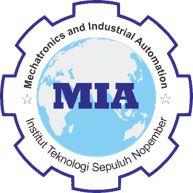Workability Analysis of 3D Printing Materials for Applications in The Construction Industry
Abstract
Keywords
Full Text:
PDFReferences
Semen Portland, SNI 2049-2015, 2015.
Trimurtiningrum and J. J. Eakput, “Geopolymer Grout Material,” Materials Science Forum, vol. 841, pp. 40-47, 2016.
I. Rochmanhadi, Alat-Alat Berat dan Penggunannya. Jakarta:YBPPU, 1992.
K. P. Umum, Katalog Alat Berat. Jakarta Selatan: Kementrian Pekerjaan Umum, 2013.
A. Husen, Manajemen Proyek. Serpong: Andi Offset, 2010.
I. W. D. Lenggogeni, Manajemen Kontruksi. Bandung: PT Remaja Rosdakarya Offset, 2013.
A. S. Sastraatmadja, Analisa (Cara Modern) Anggaran Biaya Pelaksanaan. Bandung: Nova, 1984.
R. Widianto and Sumarman, "Analisi Manajemen Konruksi pada Proyek Pembangunan Jembatan Siliwangi di Sungai Cisanggarung Kabupaten Kuningan," Jurnal Kontruksi, vol 7, no. 3, 2018.
I. Ridkiani, "Metode Konstruksi Jembatan Prestressed Ditinjau dari Segi Rencana Anggaran Biaya dan Rencana Waktu Pelaksanaan," Jurnal Online Mahasiswa (JOM) Bidang Teknik Sipil, vol. 1, no.1, 2016.
M. Gunawan, R. R. Lorens, G. B. Wijaya, and H. Sugiharto, "Metode Kantilever Pelaksanaan Jembatan Rangka Baja SEI Putting Bentang 60 M," Jurnal Dimensi Pratama Teknik Sipil, vol. 8, no.1, 2019.
Ismerianto, S. M. Nuh, and Syahrudin, "Metode Pelaksanaan Struktur Atas Jembatan Tayan," JeLAST : Jurnal PWK, Laut Sipil, Tambang, vol. 6, 2019.
P. P. Persero, “Work Method Statement”, 2020.
S. F. Rostiyanti, Alat Berat untuk Proyek Kontruksi. Jakarta: Rineka Cipta, 2008.
P. M. P. U. D. P. Rakyat, “Pedoman Analisis Harga Satuan Pekerjaan”, 2022.
M. P. U. D. P. Rakyat, “Pedoman Sistem Manajemen Keselamatan Kontruksi”, 2021.
H. G. Sahin and A. M. Aghabaglou, "Assessment of materials, design parameters and some properties of 3D printing concrete mixtures a state of the art review," Construction Building and materials, vol 316, 2021.
T. T. Le, S. A. Austin, R. A. Buswell, A. G. F. Gibb, and T. Thorpe, "Mix design and fresh properties for high performance printing concrete," Materials and Structures, pp 1221-1232, 2012.
Standard Specification for Flow Table for Use in Tests of Hydraulic Cement, ASTM C230/C230M, 2014.
Standard Guide for Measurment of the Rheological Proporties of Hydraulic Cementous Paste Using Rotational Rheometer, ASTM C1749-17a, 2017.
Standard Test Method for Drying Shrinkage of Mortar Containing Hydraulic Cement, ASTM C596-09, 2017.
Standard Test Method for Compressive Strength of Hydraulic Cement Mortars (Using 2- in. or [50-mm] Cube Specimens), ASTM C109/C109M-16a, 2016.
C. Gosselin, R. Duballet, Ph. Roux, N. Gaudilliere, J. Dirrenverger, Ph. Morel,"Large-scale 3D printing of ultra-high performance concrete a new processing route for architects and builders," Material and Design, vol. 100, pp. 102-109, 2016.
G. Ma and L. Wang,"A critical review of preparation design and workability measurement of concrete material for largescale 3D printing," Frontiers of Structural and Civil Engineering, vol. 12, pp. 382-400, 2017.
R. Lediga and D. Kruger, "Optimizing Concrete Mix Design for Application in 3D Printing Technology for the Construction Industry," Solid State Phenomena, vol. 263, pp. 24-29, 2017.
M. Papachristoforou, V. Mitsopoulos and M. Stefanidou, "Evaluation of workability parameters in 3D printing concrete," Procedia Structural Integrity, vol. 10, pp. 155-162, 2018.
Standard Specification for Coal Fly Ash and Raw or Calcined Natural Pozzolan for Use in Concrete, ASTM C618-22, 2014.
P. Suraneni, L. Burris, C. R. Shearer, and R. D. Hooton, "ASTM C618 Fly Ash Specification: Comparison with Other Specifications, Shortcomings, and Solutions," Aci Materials Journal, pp. 157-167, 2021.
A. Agusti and R. S. Riwayati, "Pengaruh Penambahan Superplasticizer Terhadap Kuat Tekan Beton K-400 Pada Umur 28 Hari," TEKNIKA: Jurnal Teknik, vol. 8, pp. 77-84, 2019.
R. Hugo, "Pengaruh Penambahan Silica Fume Dan Superplasticizer Pada Self Compacting Concrete (SCC)," Prosiding Kolokium Program Studi Teknik Sipil (KPSTS) FTSP 2017, 2017.
R. Duballet, O. Baverel, and J. Dirrenberger, "Classification Of Building Systems For Concrete 3D Printing," Automation in Construction, vol. 83, pp. 248-258, 2017.
Q. Munir, R. Peltonen, and T. Karki, "Printing Parameter Requirements for 3D Printable Geopolymer Materials Prepared from Industrial Side Streams," Materials, vol. 14, pp. 1-19, 2021.
T. Wangler, "Digital Concrete: Opportunities and Challenges,"
RILEM Technical Letters, pp. 68-75, 2021.
S. C. Ligon, R. Liska, J. Stampfl, M. Gurr, and R. Mulhaupt, "Polymers for 3D Printing and Customized Additive Manufacturing," Creative Commons Attribution, pp. 10212-10290, 2019.
F. Bos, R. Wolfs, Z. Ahmed, and T. Salet"Additive Manufacturing Of Concrete In Construction: Potentials And Challenges Of 3D" Virtual and Physical Prototyping, vol. 11, pp. 209-225, 2016.
S. Lim, R. Buswell, T. Le, R. Wackrow, S. Austin, A. Gibb, T. Thorpe, "Development Of A Viable Concrete Printing Process," Proceedings of the 28th ISARC, Seoul, Korea, pp. 665-670, 2011.
Wilwin and A. Sutandi, "Studi Identifikasi Risiko Pada Proyek Infrastruktur Di Indonesia," Jurnal Mitra Teknik Sipil, vol. 4, pp. 295- 302, 2021.
Persyaratan Beton Strukturan Untuk Bangunan Gedung Dan Penjelasan, SNI 2847:2019, 2019.
M. Setiawati, "Fly Ash Sebagai Bahan Pengganti Semen Pada Beton," Prosiding Seminar Nasional Sains dan Teknologi, pp. 295-302, 2018.
W. S. Wicaksono, W. Wibowo, and E. Safitri, "Pengaruh Kadar Silica Fume Terhadap Kuat Tekan Pada High Strength Self Compacting Concrete (HSSCC) Benda Uji Silinder D 7,5 Cm X 15 Cm Usia 14 Dan 28 Hari," Matriks Teknik Sipil, vol. 6, pp. 638-644, 2018.
N. Nadia and A. Fauzi, "Pengaruh Kadar Silika Pada Agregat Halus Campuran Beton Terhadap Peningkatan Kuat Tekan," Jurnal Konstruksia, vol. 3, pp. 35-43, 2011.
S. P. Hapsari, W. Wibowo, and E. Safitri, "Kajian Pengaruh Variasi Komposisi Silica Fume Terhadap Parameter Beton Memadat Mandiri Dengan Kuat Tekan Beton Mutu Tinggi," Matriks Teknik Sipil, vol. 5, pp. 1449-1456, 2017.
A. Basuki, "Pengaruh Penambahan Fly Ash dan Silica Fume terhadap Daya Tahan Penetrasi Air Beton Normal," Jurnal Teknologi Bahan dan Barang Teknik, vol. 5, pp. 21-28, 2015.
DOI: http://dx.doi.org/10.12962%2Fj23378557.v9i2.a16185
Refbacks
- There are currently no refbacks.
This work is licensed under a Creative Commons Attribution 4.0 International License. IPTEK The Journal of Engineering published by Pusat Publikasi Ilmiah, Institut Teknologi Sepuluh Nopember.
Please contact us for order or further information at: email: iptek.joe[at]gmail.com Fax/Telp: 031 5992945. Editorial Office Address: Pusat Riset Building 6th floor, ITS Campus, Sukolilo, Surabaya 60111, Indonesia.








